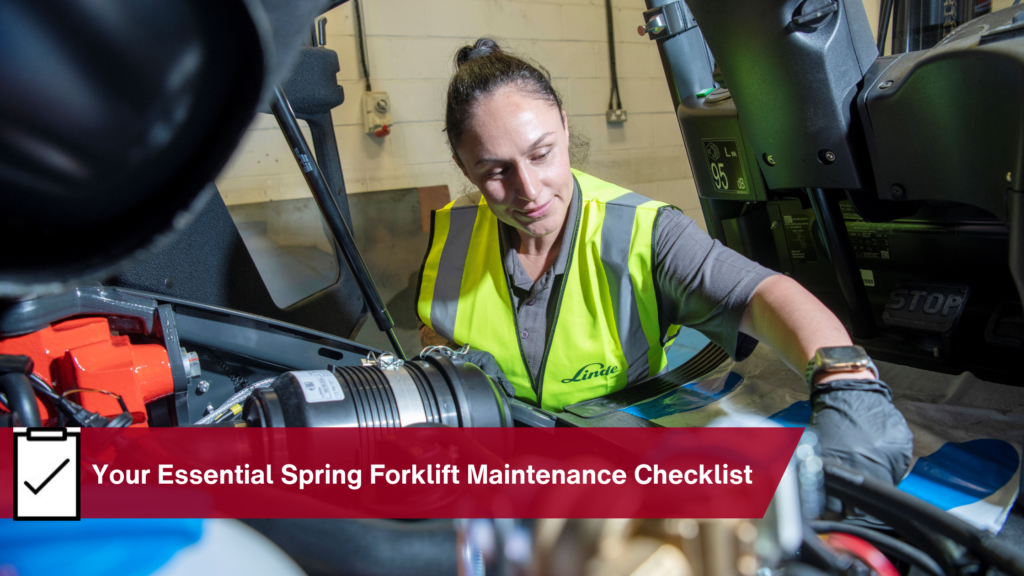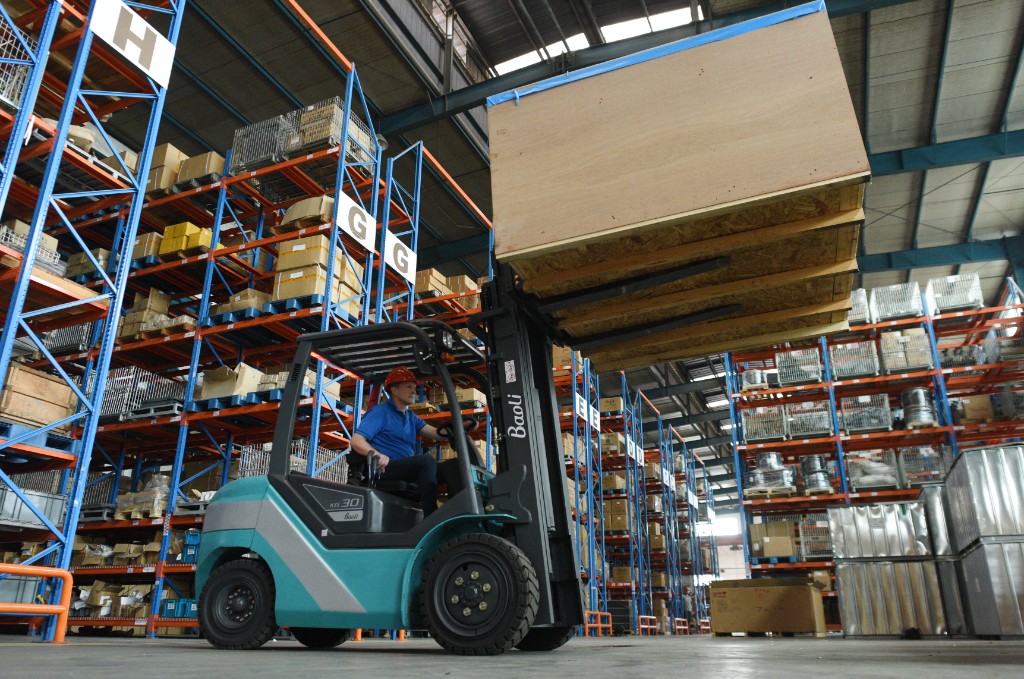Table of Contents
As spring arrives, it’s prime time for a thorough check-up on your forklift trucks. In environments with seasonal changes and temperature fluctuations, ensuring the functionality of your equipment is paramount for smooth operations. Follow this guide to conduct a comprehensive inspection and necessary maintenance for secure and efficient workplace conditions.
Forklift Statistics
Regularly reviewing your forklift’s service history is as crucial as monitoring your personal vehicle maintenance history. Just like your car, understanding the service history of your forklift provides valuable insights into its past issues and potential concerns. By keeping track of maintenance records, you can identify recurring problems, track component lifespan, and schedule preventive maintenance more effectively. This proactive approach helps minimize downtime, reduce repair costs, and ensure the safe and efficient operation of your forklift fleet, ultimately contributing to the overall productivity and profitability of your business.
Wear and Tear Inspection
Forklifts undergo heavy workloads, necessitating regular inspections to maintain longevity and reliability. Key areas to inspect include:
Battery
- Check terminals for corrosion to ensure proper electrical connections.
- Monitor electrolyte levels and specific gravity for optimal performance.
- Well-maintained batteries optimize forklift power and productivity.
Electrical Cables
- Inspect for wear, fraying, or damage to prevent electrical issues.
- Ensure secure connections and proper insulation to mitigate safety risks.
- Regular maintenance minimizes downtime and ensures workplace safety.
Spark Plugs
- Check for fouling, corrosion, or wear to maintain engine performance.
- Replace at recommended intervals for efficient fuel combustion.
- Properly functioning spark plugs contribute to reliable engine operation.
Corrosion Inspection
- Inspect metal components for rust or corrosion caused by environmental factors.
- Corrosion weakens structural integrity and leads to fluid leakages.
- Implement preventive measures such as protective coatings to extend forklift lifespan.
By conducting thorough inspections of these components, potential issues can be identified early, ensuring the longevity, reliability, and security of the forklift fleet.
Cooling System Check
Verify that radiator hose clamps and caps are securely fastened to prevent any coolant leaks, which could lead to overheating. Overheating poses a significant risk to the forklift’s engine and overall performance, making it imperative to ensure proper cooling system function for optimal machinery lifespan.
Air Intake System Inspection
Confirm that the air intake system is sealed properly to prevent any contaminants from entering the engine. Maintaining a sealed air intake system is crucial for ensuring optimal forklift performance by safeguarding against engine damage and maintaining efficient combustion processes.
Brake Examination
When evaluating the brakes on your forklift, it’s essential to assess their height and pressure to ensure they meet safety standards. Brakes should provide sufficient resistance when engaged, allowing for precise control over the vehicle’s movement, especially in busy warehouse environments. If brakes offer minimal resistance or show signs of wear, such as uneven braking or squealing, it’s crucial to replace them promptly.
Fork Inspection
Inspecting the forks of your forklift is critical for ensuring operational safety and efficiency. Look closely for any visible cracks or damage, particularly along load-bearing areas. Additionally, assess the fork height and thickness, paying attention to signs of bending or thinning, especially in heavily used forklifts. Forks that are compromised pose significant safety risks, including load instability and potential structural failure.
Steering Wheel Assessment
When assessing the steering wheel of your forklift, it’s important to check various components to ensure proper functionality. Inspect valves, rubber encasements, and connecting hoses for any signs of damage or wear. Properly functioning steering components are crucial for maneuverability and control, especially in tight warehouse spaces. Any issues with the steering system should be addressed promptly to prevent accidents and ensure operator safety.
Transmission Fluid Check
Monitoring the transmission fluid of your forklift is vital for maintaining optimal performance and longevity. Check fluid levels regularly and inspect for any changes in color or odor. Bright and clear fluid indicates normalcy, while dark or cloudy fluid may suggest contamination or degradation. Additionally, assessing oil levels provides valuable insights into overall maintenance needs. Proper transmission fluid levels and quality are essential for smooth operation, efficient power transfer, and preventing costly repairs.
Tire Pressure Verification
Regularly verifying tire pressure is crucial for ensuring safe and efficient forklift operation. Adequate tire pressure is essential for supporting heavy loads and maintaining stability during maneuvers. Check tire pressure regularly, especially before shifts or when handling particularly heavy loads. Additionally, inspect tires for any signs of punctures or tears that could compromise safety.
Regular maintenance and inspections are essential for ensuring the reliability, safety, and efficiency of forklift operations. By following this checklist and maintenance guide, you can identify potential issues early, differentiate between reliable and deteriorating forklifts, and maintain a productive workplace environment.



